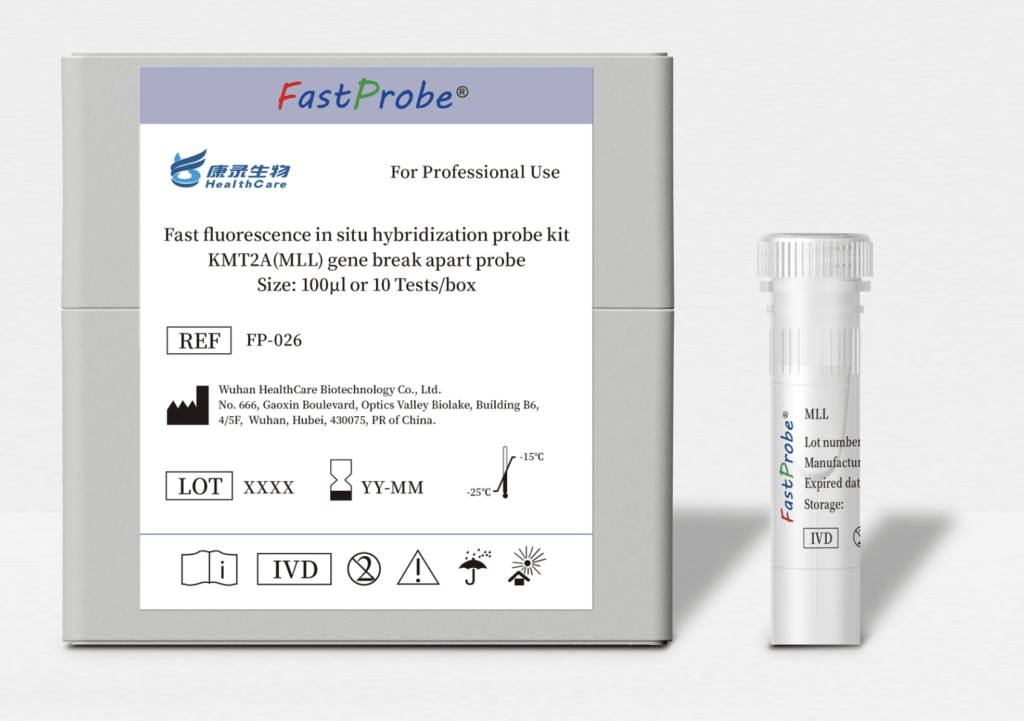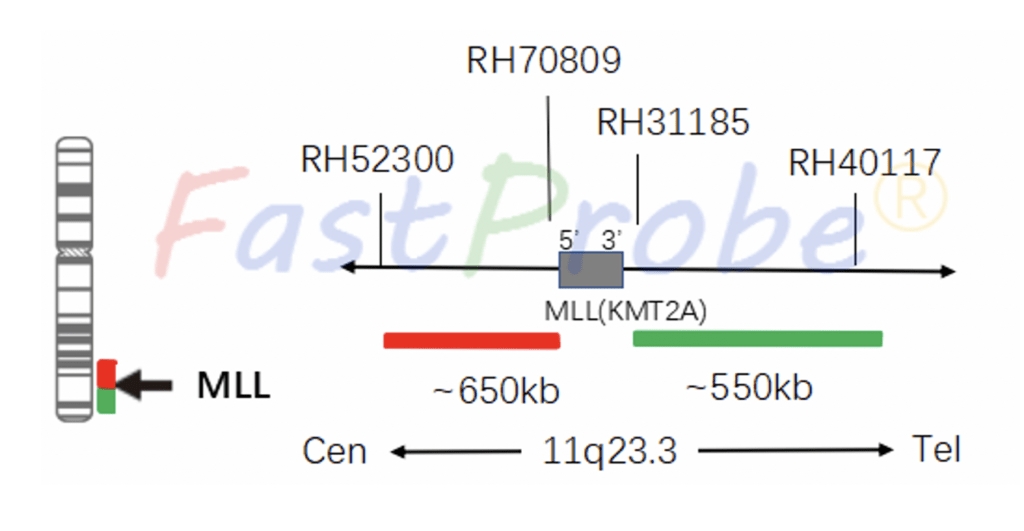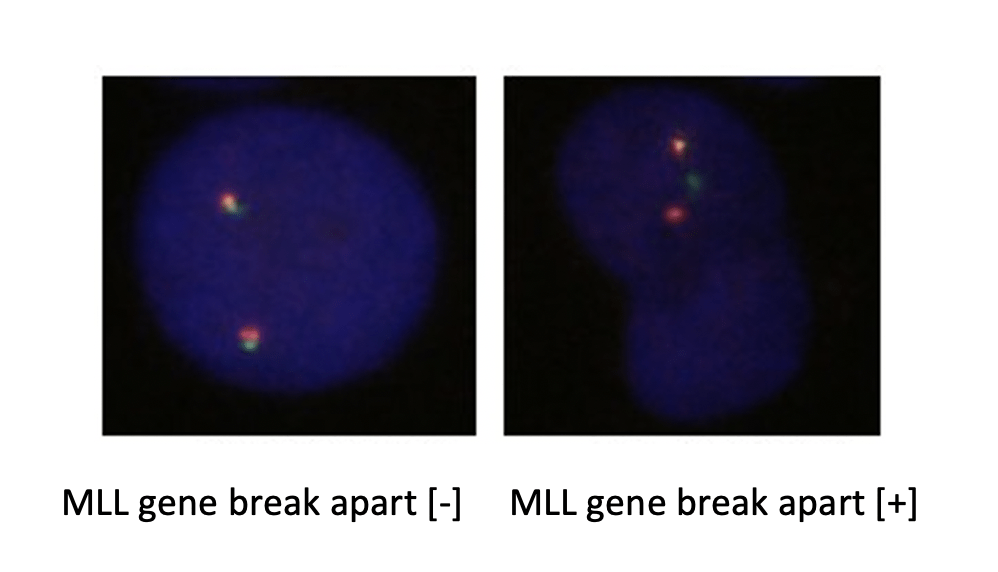
The MLL (Mixed-linage leukemia or Myeloid-lymphoid leukemia) gene is located in the No. 11 staining map, Zone 2, Zone 3 (11q23), and was successfully cloned as early as 1991. The MLL gene is a key gene in the regulation of hematopoietic processes, and its abnormality is closely related to the pathogenesis of leukemia. According to statistics, there are at least 104 MLL gene rearrangements, and up to 64 MLL genes fusion have been identified. Most of the leukemia’s with MLL gene fusion are highly malignant, not sensitive to chemotherapy, and have low remission rate. Therefore, the detection of MLL gene fusion in acute leukemia is of great significance for the choice of treatment options for leukemia, residual lesion detection and prognosis.
MLL gene region 5’ end is labeled with an orange-red fluorescein, and the 3′ end of MLL gene labeled with a green fluorescein. MLL gene break apart probe is used to detect 11q23 segment translocation, and all MLL gene rearrangements could be detected, avoiding separate detection or missed diagnosis caused by gene fusion.

Common translocation forms of the MLL gene are t(4;11), t(9;11), t(11;19) and other recombination’s. 8-10% of acute myeloid leukemia (AML) has this abnormality. MLL recombination exists in 80% of infants with AML, suggesting a moderate risk type; other MLL genes are recombined into high-risk types.

Product size: 100μL FISH probe ( ⬤ | ⬤ ) + Pretreatment reagent (10 tests) + Antifade staining solution DAPI (10 tests).